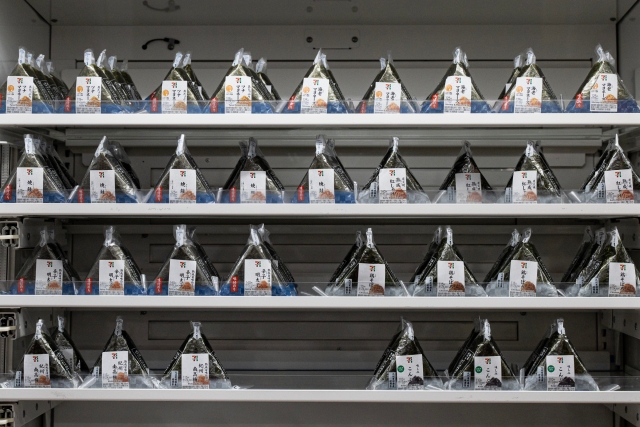
There’s a reason why this convenience store staple tastes different in these regions.
The other day, a programme on Japanese TV triggered a buzz on the Internet when it commented on the deliciousness of the Tuna Mayo onigiri rice ball from convenience store chain Family Mart.
People online piped up to say the reason why the rice ball seemed especially delicious was likely because it was purchased in Kansai (the region in and around Osaka). This sparked off a whole discussion around rice balls from the top three convenience store chains, Family Mart, Lawson and 7-Eleven, and how they taste different in Kansai and Kanto (the region in and around Tokyo).
So…what makes them taste different?
Well, according to 7-Eleven, it’s all to do with the seaweed. To find out more, our reporter Egawa Tasuku decided to take a trip down to Kyoto, one of the biggest cities in Kansai, and he made sure to take a supply of Tokyo-bought 7-Eleven rice balls with him for a comparison taste test.
After stepping out of Kyoto Station and admiring the glow of Kyoto Tower at night, Tasuku made his way to his hotel, stopping off at a nearby 7-Eleven to pick up some local rice balls.
▼ Ah, the understated beauty of a shelf of perfectly arranged onigiri…
Tasuku bought the same five varieties that he’d bought in Tokyo, and once he arrived at his hotel room for the night, he laid them all out under the unforgiving glare of the overhead light.
He picked up a Kyoto-born rice ball in “Salmon Flakes” flavour, and that’s when something on the packaging caught his eye.
Taking a closer look, he saw it was true — this little message in red-and-white read “seasoned seaweed“!
You don’t see this message on rice balls in the Kanto region, where onigiri are made with unseasoned seaweed. Tasuku usually eats his onigiri in Kanto, so he wasn’t sure what to expect with this seasoned seaweed version, but he eagerly unwrapped the morsel and immediately noticed that…
▼ …the seaweed was actually sticky beneath his fingers.
Ignoring that for a moment, he took a bite of the rice ball and was pleased to find that his first mouthful turned out to be a surprisingly flavourful experience. The compatibility between grilled salmon and seasoned seaweed was really good. Really, really good.
As far as rice balls go, Tasuku felt that this Kansai one tasted more luxurious than the ones he usually eats back home. However, one small thing he couldn’t ignore was the stickiness of the seaweed, which meant he ate his next rice ball with part of the wrapper still on.
Even then, he couldn’t escape the stickiness, as there was no real way to eat the onigiri properly without touching the surface of the seaweed. One wet wipe wasn’t even enough to wipe the stickiness away either, which means if you were eating these rice balls outdoors, you’d want to make sure you had a few wet wipes with you.
Tasuku wondered if he should eat the remaining rice balls with a knife and fork, as that would be the only way to save his hands from the annoying stickiness. Instead, he decided to take a deep breath and just go with the flow, allowing his hands to be sticky as he tried the rest of them, all while trying his hardest to ignore the sticky sensation on his skin.
So how did they taste? Well, Tasuku was surprised that the compatibility between seasoned seaweed and filling wasn’t always that great. Out of all of them, the Salmon Flakes definitely tasted better with the seasoned seaweed, and the Prawn Mayo as well, but when it came to the Tuna Mayo, Tasuku felt it was a tie between both the seasoned and unseasoned versions.
For the Spicy Cod Roe, though, Tasuku found that the unseasoned seaweed was a better fit, as the seasoned seaweed interfered with the flavour of the filling, which was already spicy and flavourful on its own.
As for the Fermented Salmon (bottom in the images below), Tasuku noticed that they were both unseasoned, which means you can buy unseasoned seaweed in Kansai if that’s more to your liking. However, it means Tasuku wasn’t able to compare them this time, as he didn’t have the seasoned version.
So, to summarise the results, Tasuku felt that the seasoned seaweed was great for some fillings and not so great with others, but in the end, it was ultimately undone by its inescapable stickiness. For Tasuku, the difference in flavour wasn’t great enough to account for the annoyance of being left with sticky fingers after eating, and he was thankful for the fuss-free eating style afforded by the non-sticky Tokyo rice balls.
After taking a look online to find out why the rice balls were different in different regions, Tasuku found that 7-Eleven was quoted as saying it’s all due to the different preferences in local tastes.
After a further inspection at Kyoto Convenience stores the following day, Tasuku confirmed that the seasoned seaweed rice balls aren’t just limited to 7-Elevens in the region, but Lawsons and Family Marts as well.
▼ The red-and-white labels on both read: “seasoned seaweed”.
So next time you’re visiting Kansai, be sure to stop by a convenience store and give their onigiri rice balls a try. It’s a great way to find out if your palate is more attuned to Kansai tastes or Kanto tastes, and if you stop by this Family Mart in Kyoto, you’ll be able to pair your rice balls with a glass of Japanese whisky, for a truly unforgettable experience!
Photos ©SoraNews24
● Want to hear about SoraNews24’s latest articles as soon as they’re published? Follow us on Facebook and Twitter!
[ Read in Japanese ]

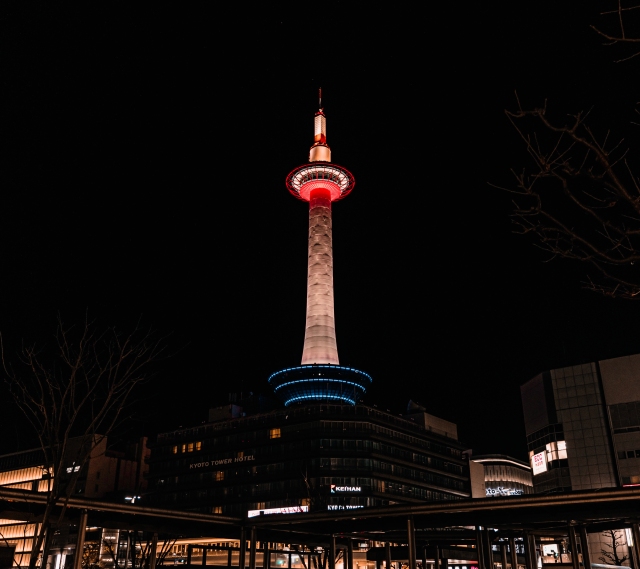
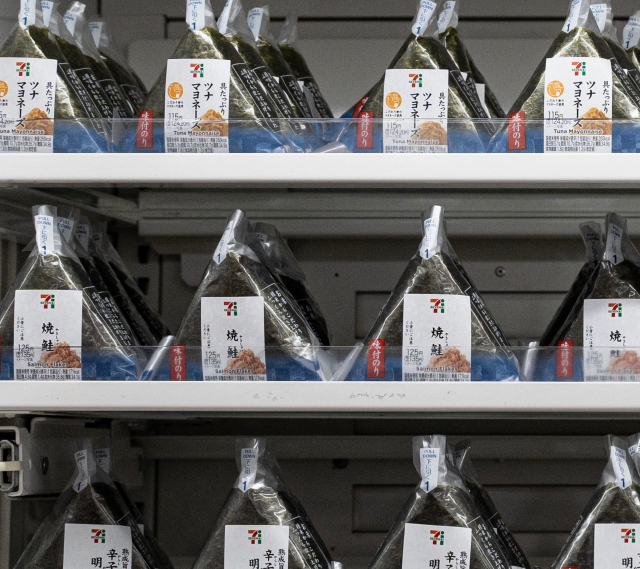
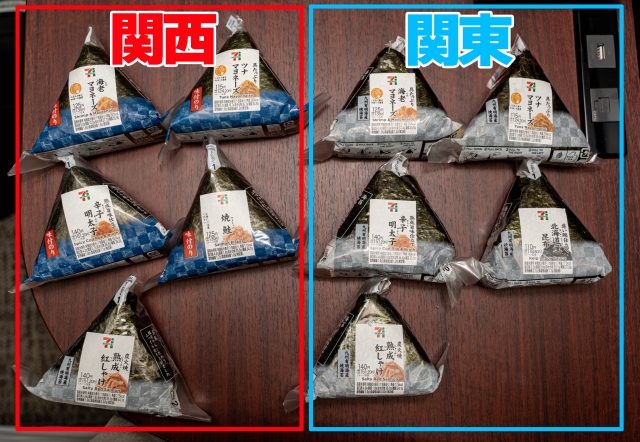
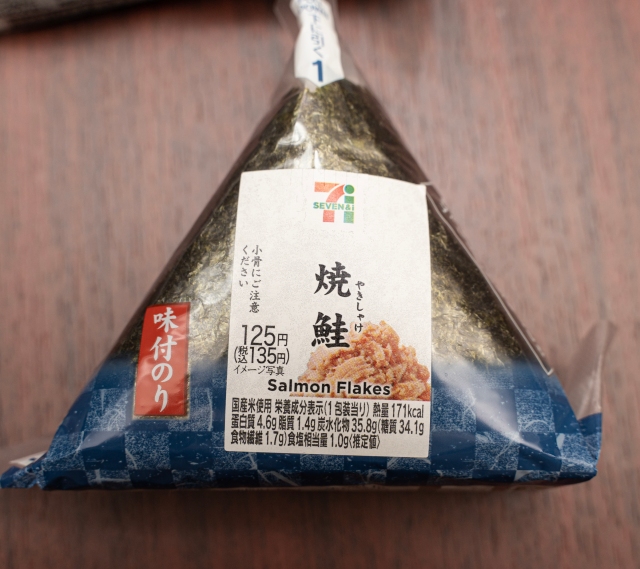

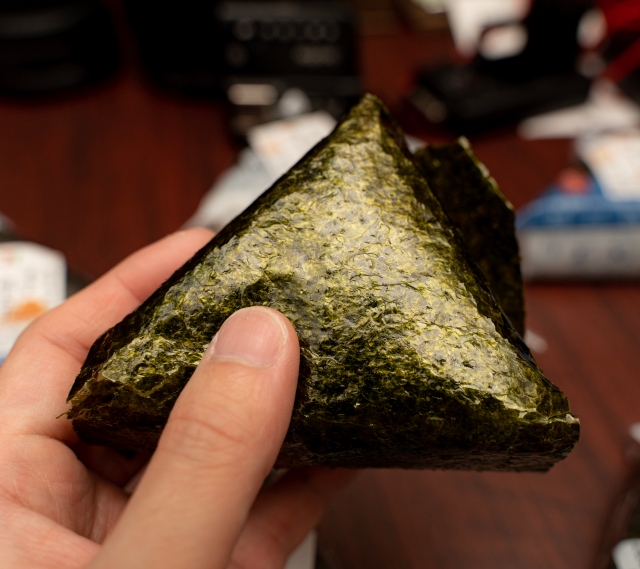

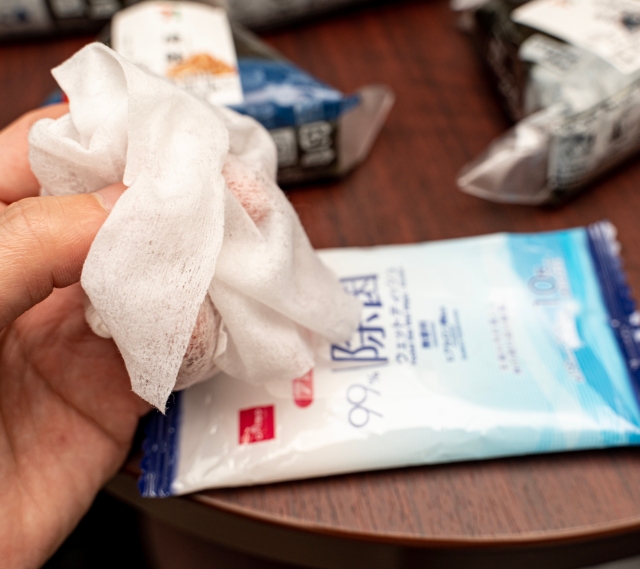
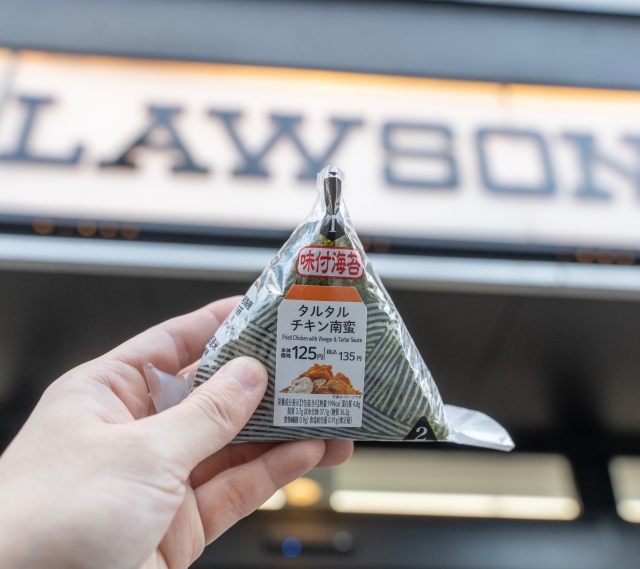
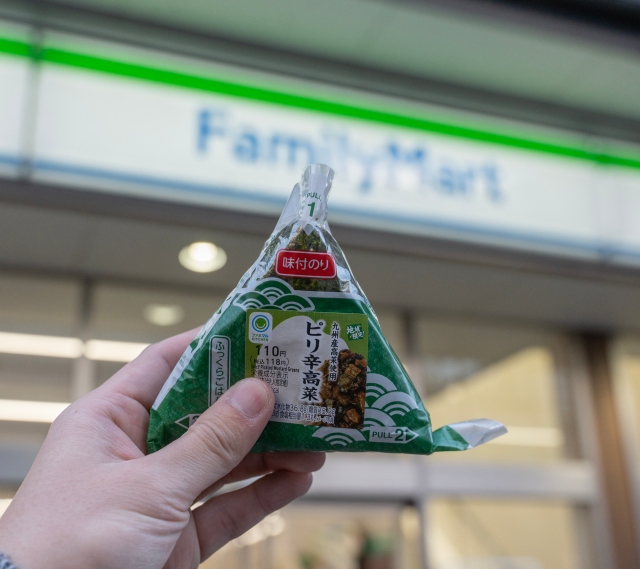
 In celebration of Onigiri Day, we compare rice balls from three different convenience stores
In celebration of Onigiri Day, we compare rice balls from three different convenience stores Which Japanese convenience store has the best plain onigiri rice balls?
Which Japanese convenience store has the best plain onigiri rice balls? Which Japanese convenience store sells the best onigiri rice balls?【Taste test】
Which Japanese convenience store sells the best onigiri rice balls?【Taste test】 Should you warm up your convenience store onigiri rice balls in the microwave?【Taste test】
Should you warm up your convenience store onigiri rice balls in the microwave?【Taste test】 Japanese convenience store showdown – Who’s got the best ikura rice balls?【Taste test】
Japanese convenience store showdown – Who’s got the best ikura rice balls?【Taste test】 Japanese ramen restaurants under pressure from new yen banknotes
Japanese ramen restaurants under pressure from new yen banknotes New private rooms on Tokaido Shinkansen change the way we travel from Tokyo to Kyoto
New private rooms on Tokaido Shinkansen change the way we travel from Tokyo to Kyoto French Fries Bread in Tokyo’s Shibuya becomes a hit on social media
French Fries Bread in Tokyo’s Shibuya becomes a hit on social media McDonald’s new Happy Meals offer up cute and practical Sanrio lifestyle goods
McDonald’s new Happy Meals offer up cute and practical Sanrio lifestyle goods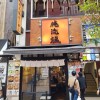 Non-ramen Ramen Restaurant Stars: The quest begins at Tokyo’s Oreryu Shio
Non-ramen Ramen Restaurant Stars: The quest begins at Tokyo’s Oreryu Shio We tried Korea’s way-too-big King Tonkatsu Burger at Lotteria 【Taste Test】
We tried Korea’s way-too-big King Tonkatsu Burger at Lotteria 【Taste Test】 Sakura tree falls on man at Sannenzaka near Kiyomizu temple in Kyoto 【Breaking News】
Sakura tree falls on man at Sannenzaka near Kiyomizu temple in Kyoto 【Breaking News】 Japanese company starts project to restore Nakagin Capsules to capsule hotel
Japanese company starts project to restore Nakagin Capsules to capsule hotel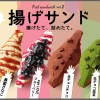 Fried sandwiches arrive in Tokyo, become hot topic on social media
Fried sandwiches arrive in Tokyo, become hot topic on social media Fire away your frustration at ‘404 Not Found’ — Site turns error message into classic arcade game
Fire away your frustration at ‘404 Not Found’ — Site turns error message into classic arcade game All-you-can-drink Starbucks and amazing views part of Tokyo’s new 170 meter-high sky lounge
All-you-can-drink Starbucks and amazing views part of Tokyo’s new 170 meter-high sky lounge More foreign tourists than ever before in history visited Japan last month
More foreign tourists than ever before in history visited Japan last month Starbucks reopens at Shibuya Scramble Crossing with new look and design concept
Starbucks reopens at Shibuya Scramble Crossing with new look and design concept Disney princesses get official manga makeovers for Manga Princess Cafe opening in Tokyo
Disney princesses get official manga makeovers for Manga Princess Cafe opening in Tokyo Studio Ghibli releases new action figures featuring Nausicaä of the Valley of the Wind characters
Studio Ghibli releases new action figures featuring Nausicaä of the Valley of the Wind characters Beautiful new Final Fantasy T-shirt collection on the way from Uniqlo【Photos】
Beautiful new Final Fantasy T-shirt collection on the way from Uniqlo【Photos】 Is the new Shinkansen Train Desk ticket worth it?
Is the new Shinkansen Train Desk ticket worth it? Studio Ghibli glasses cases let anime characters keep an eye on your spectacles
Studio Ghibli glasses cases let anime characters keep an eye on your spectacles Studio Ghibli releases Kiki’s Delivery Service chocolate cake pouches in Japan
Studio Ghibli releases Kiki’s Delivery Service chocolate cake pouches in Japan New definition of “Japanese whiskey” goes into effect to prevent fakes from fooling overseas buyers
New definition of “Japanese whiskey” goes into effect to prevent fakes from fooling overseas buyers Our Japanese reporter visits Costco in the U.S., finds super American and very Japanese things
Our Japanese reporter visits Costco in the U.S., finds super American and very Japanese things Studio Ghibli unveils Mother’s Day gift set that captures the love in My Neighbour Totoro
Studio Ghibli unveils Mother’s Day gift set that captures the love in My Neighbour Totoro Domino’s Japan now sells…pizza ears?
Domino’s Japan now sells…pizza ears? New Japanese KitKat flavour stars Sanrio characters, including Hello Kitty
New Japanese KitKat flavour stars Sanrio characters, including Hello Kitty New Pokémon cakes let you eat your way through Pikachu and all the Eevee evolutions
New Pokémon cakes let you eat your way through Pikachu and all the Eevee evolutions Sales of Japan’s most convenient train ticket/shopping payment cards suspended indefinitely
Sales of Japan’s most convenient train ticket/shopping payment cards suspended indefinitely Sold-out Studio Ghibli desktop humidifiers are back so Totoro can help you through the dry season
Sold-out Studio Ghibli desktop humidifiers are back so Totoro can help you through the dry season Japanese government to make first change to romanization spelling rules since the 1950s
Japanese government to make first change to romanization spelling rules since the 1950s Ghibli founders Toshio Suzuki and Hayao Miyazaki contribute to Japanese whisky Totoro label design
Ghibli founders Toshio Suzuki and Hayao Miyazaki contribute to Japanese whisky Totoro label design Doraemon found buried at sea as scene from 1993 anime becomes real life【Photos】
Doraemon found buried at sea as scene from 1993 anime becomes real life【Photos】 Tokyo’s most famous Starbucks is closed
Tokyo’s most famous Starbucks is closed One Piece characters’ nationalities revealed, but fans have mixed opinions
One Piece characters’ nationalities revealed, but fans have mixed opinions We asked a Uniqlo employee what four things we should buy and their suggestions didn’t disappoint
We asked a Uniqlo employee what four things we should buy and their suggestions didn’t disappoint Princesses, fruits, and blacksmiths: Study reveals the 30 most unusual family names in Japan
Princesses, fruits, and blacksmiths: Study reveals the 30 most unusual family names in Japan Are high-end convenience store rice balls really packed with more ingredients?
Are high-end convenience store rice balls really packed with more ingredients? This USB device exists solely to warm up rice balls, and honestly, it does a great job
This USB device exists solely to warm up rice balls, and honestly, it does a great job Onikun: Epic onigiri so big they’re half demon, half rice ball
Onikun: Epic onigiri so big they’re half demon, half rice ball Japanese convenience store’s cheap knockoff croissant — is it any good?
Japanese convenience store’s cheap knockoff croissant — is it any good? Godiva creates a new drink with Japanese sake starter
Godiva creates a new drink with Japanese sake starter Bizarre or brilliant? Takoyaki and okonomiyaki rice balls available in convenience stores now
Bizarre or brilliant? Takoyaki and okonomiyaki rice balls available in convenience stores now We tried super spicy wasabi ramen and yakisoba that’s rumored to make anyone cry【Taste Test】
We tried super spicy wasabi ramen and yakisoba that’s rumored to make anyone cry【Taste Test】 Sushi and onigiri rice balls get a new look with rollable furikake
Sushi and onigiri rice balls get a new look with rollable furikake Survey ranks convenience store rice balls – salmon, sea-dwelling poultry & plants steal the show
Survey ranks convenience store rice balls – salmon, sea-dwelling poultry & plants steal the show If an onigiri and a cheeseburger had a baby, it’d be a Bakudan Musubi
If an onigiri and a cheeseburger had a baby, it’d be a Bakudan Musubi Taste-testing every single sakura sweet and cherry blossom drink we could find at Mujirushi
Taste-testing every single sakura sweet and cherry blossom drink we could find at Mujirushi The surprising semi-secret ingredient in many Japanese convenience store rice balls: oil
The surprising semi-secret ingredient in many Japanese convenience store rice balls: oil Family Mart to celebrate 40th birthday by introducing onigiri with eco-friendly packaging
Family Mart to celebrate 40th birthday by introducing onigiri with eco-friendly packaging The world’s most famous sushi restaurant sells seaweed too, so we made nori rice balls with it
The world’s most famous sushi restaurant sells seaweed too, so we made nori rice balls with it Which Japanese convenience store sells the best beef stew?【Taste test】
Which Japanese convenience store sells the best beef stew?【Taste test】 Gyoza rice balls are here, and everyone agrees they look awesome, but are they? 【Taste Test】
Gyoza rice balls are here, and everyone agrees they look awesome, but are they? 【Taste Test】 Around Japan in 47 rice balls: Mr. Sato buys each prefecture’s musubi all from one Tokyo shop
Around Japan in 47 rice balls: Mr. Sato buys each prefecture’s musubi all from one Tokyo shop
Leave a Reply